

Damion Smy
Boxy new KGM Musso unveiled to take on HiLux and Ranger ahead of Australian launch
10 Hours Ago
It's a significant overhaul with lots of plusses, but the latest IS still feels dated and outclassed by more superior rivals. Build quality, though, remains first class

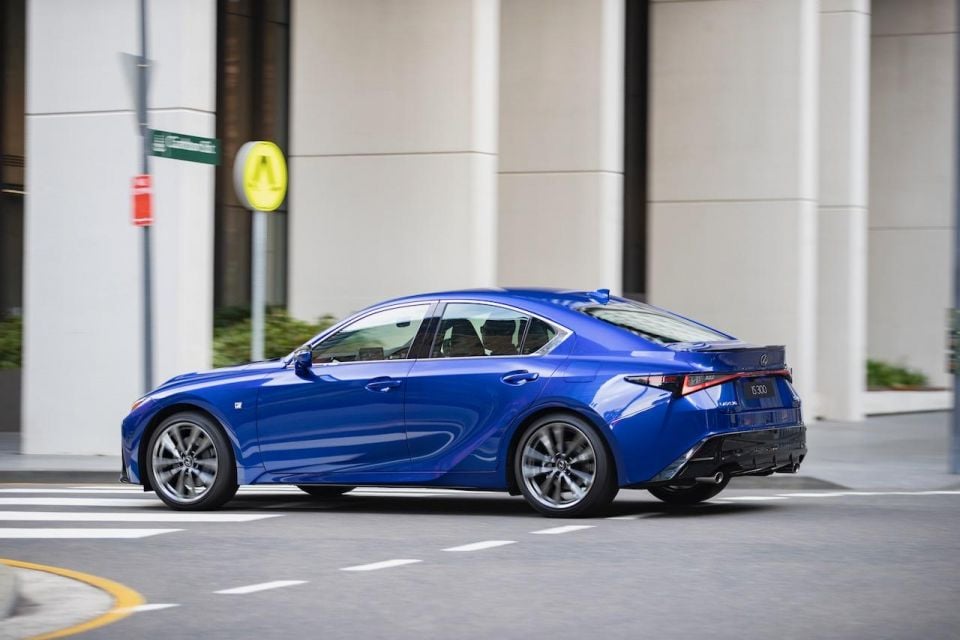

Senior Road Tester
New from
$60,500
excl. on-roads

Senior Road Tester
New from
$60,500
excl. on-roads


Senior Road Tester
New from
$60,500
excl. on-roads

Senior Road Tester
New from
$60,500
excl. on-roads
Quickly see how this car stacks up against its competition. Select any benchmark to see more details.
Where expert car reviews meet expert car buying – CarExpert gives you trusted advice, personalised service and real savings on your next new car.
I was barely aware of the first-generation Lexus IS despite a life that stretched from 1998 to 2005. Not because I had any particular dislike for the car, but because Lexus was all about class-leading luxury back then and the IS appeared to compromise hard-fought brand values built off the back of the German-busting LS400 and its LS430 successor.
It was a different story when I got to drive a spanking-new second-generation IS350 across some of the best and most challenging roads in regional Victoria – at warp speed and with the blessings of the product manager, himself a petrol head and lover of all things fast.
I can still see his grin and recall his instructions, “let’s chase the guy in front down and take him on the exit”. I got along brilliantly with that guy.
It wasn’t all that quick by the standards of the day, but with a 3.5-litre V6 making 228kW of power and 375Nm of torque and a well-sorted chassis you could push the IS hard and keep it pinned through the faster-flowing bends. Not only was it an inspiring drive, it was also beautifully built.
Next up was some quality seat time in the properly potent Lexus IS F with its mean-sounding 310kW/510Nm 5.0-litre V8 making all the right noises and plenty of go. It was stiffer again, perhaps even too stiff, or the suspension tuning wasn’t as well sorted as it could have been. Ride comfort was simply non-existent.
The arrival of the current and third-generation IS in 2014 brought with it sharper lines and a more aggressive stance to all variants thanks to a host of design cues borrowed from the Lexus LF-CC Concept shown at the 2012 Paris motor show.
Here was a car that was entirely more resolved and one that could take the fight to German rivals like the Audi A4, BMW 3 Series and Mercedes-Benz C-Class – at least, that’s what Lexus was hoping for.

It was mildly refreshed in 2017 with more streamlined light assemblies, a new front fascia and bonnet, and improvements in the cabin, but still no Apple CarPlay or Android Auto, or even a touchscreen infotainment unit. Outdated technology has effectively held the model back for years while rivals jumped ahead in leaps and bounds with all manner of digitisation and infotainment.
Lexus is calling the 2021 IS model update ‘Reimagined‘ and says it’s the first Lexus chassis developed on the brand’s own mini-Nürburgring at Shimoyama, with a promise of better driving dynamics and greater ride comfort.
It’s still based on the third-generation car, but with a revised exterior and improvements under the skin including greater body rigidity and the use of lightweight suspension components for faster steering response, greater agility, and better ride comfort.
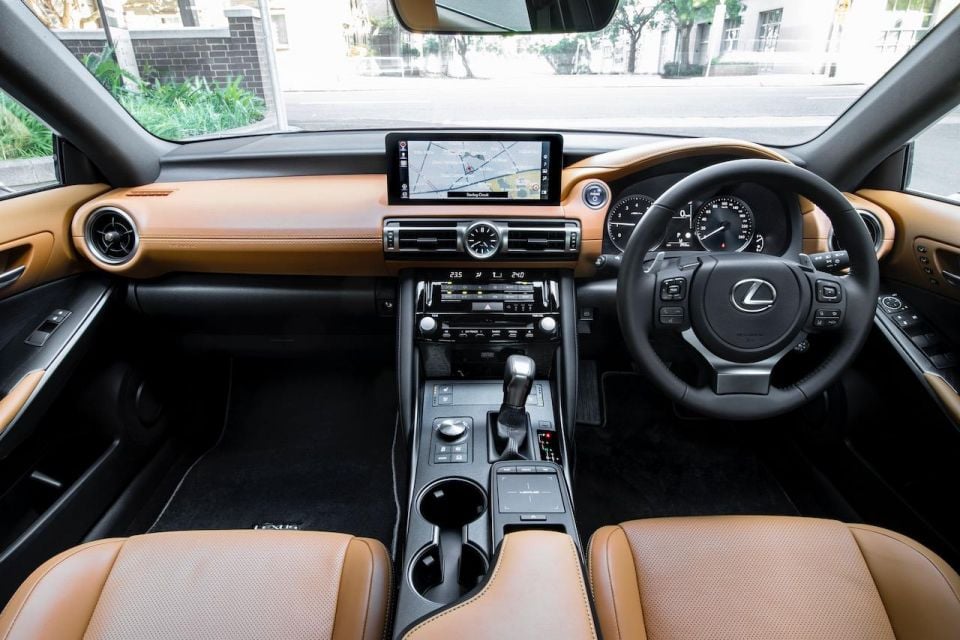
There are some modifications in the cockpit if you look hard enough, but the real highlight is a new widescreen infotainment unit with smartphone connectivity – yes, that’s Apple CarPlay and Android Auto – though you still get the awful (and redundant) trackpad as well as a more luxurious cabin.
At first glance those changes to the body are not entirely evident but take a few steps back and run your eyes over the entire form and you’ll see more resolved IS, one that dials up the aggression a few more notches.
Even though it’s riding on a reworked version of the existing architecture it’s longer, lower and wider by 30mm with beefed-up wheel-arch flares and wider tracks – 50mm at the rear and 45mm at the front – for a more planted stance. It’s lighter overall too, up to 30kg less than its predecessor in the case of the IS350 F Sport.
It’s more provocative with a new lightweight bonnet that’s more sharply raked and slimmer headlights positioned 43mm lower than before. The roofline at the rear is also 15mm lower, leading to the bootline which is 31mm lower, and there are more assertive character lines.
No question the new IS will turn heads, especially in F Sport guise with its bigger wheels, RC F-inspired vertical air intakes and a piano black frame for the revised spindle grille.
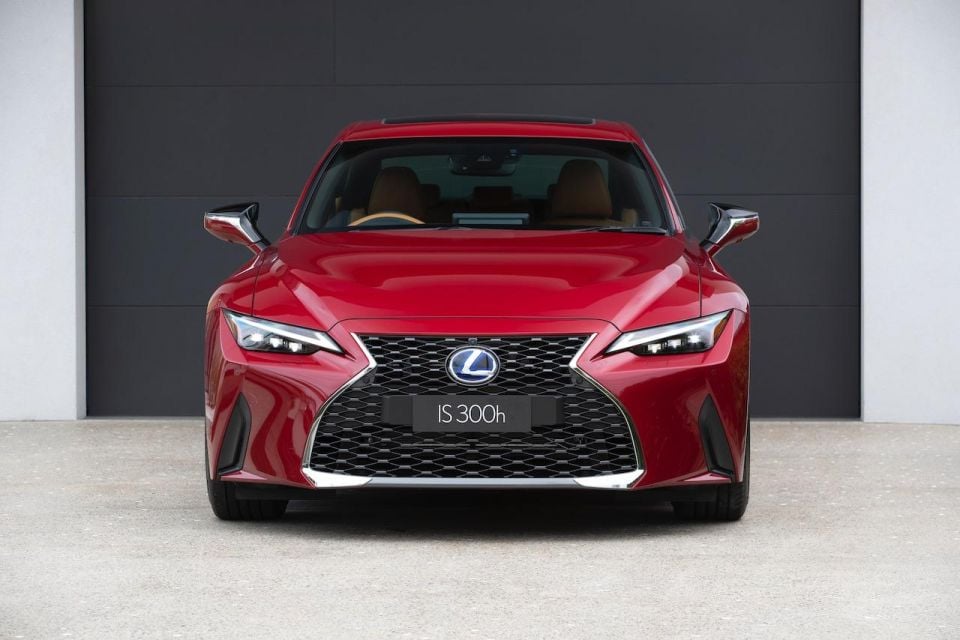
It’s a more streamlined line-up for 2021 IS with two trims (Luxury and F Sport) and three well-established powertrains including a four-cylinder turbo petrol, V6 petrol, and 2.5-litre naturally-aspirated petrol-electric hybrid.
Prices kick off from $61,500 (up $1000) for the entry-level IS300 Luxury and top out at $78,100 for the IS350 F Sport with Enhancement Pack, excluding on-road costs.
While there are slightly fewer variants with the IS300h Sports Luxury and 350 Luxury models discontinued, Lexus has added pre-defined ‘Enhancement Pack’ versions to the range which effectively expands the total number of variants to a not-so rationalised 12.
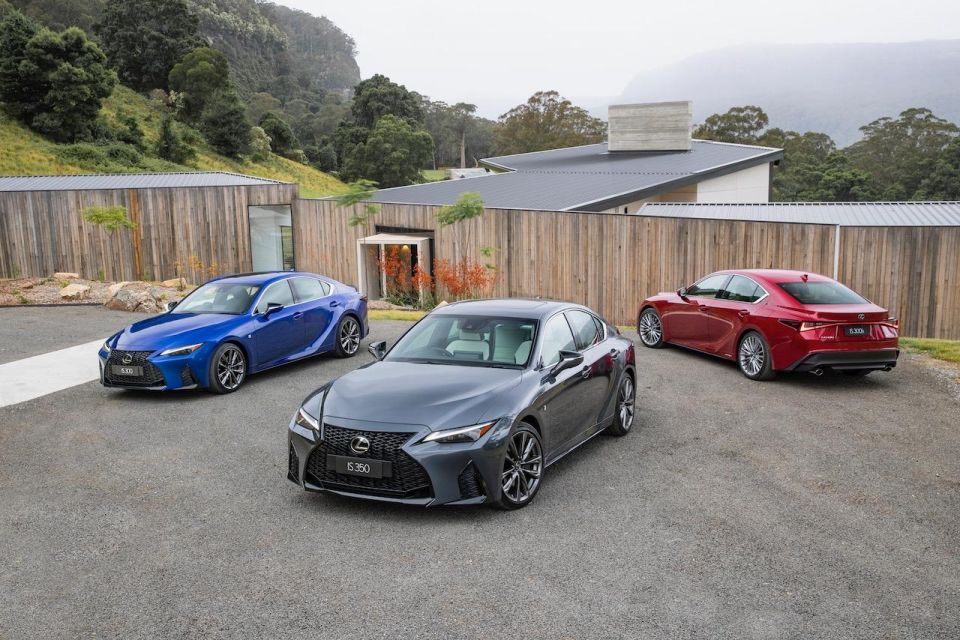
IS300
IS300h
IS350
All prices exclude on-road costs
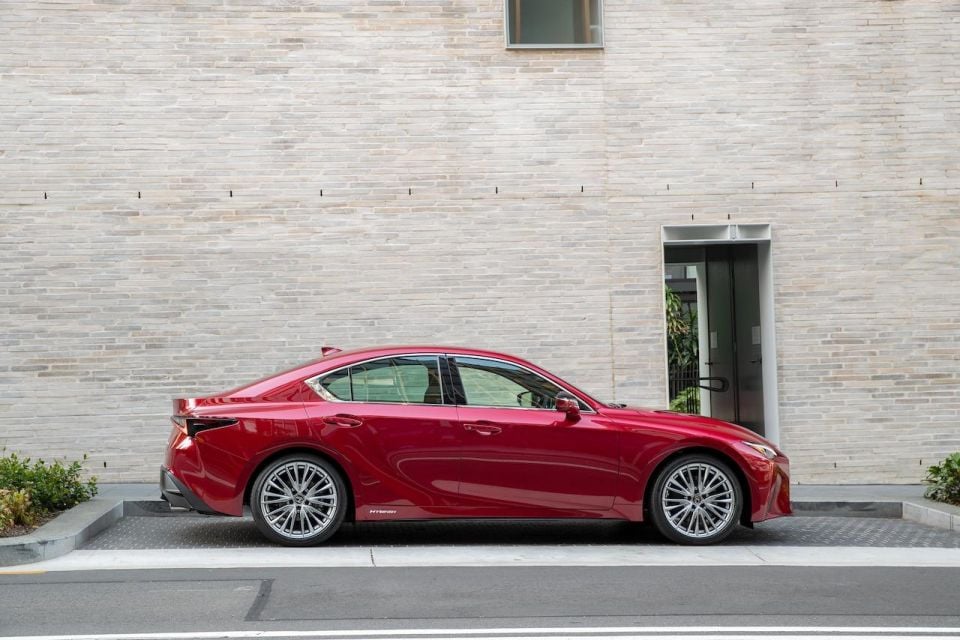
By way of comparison, Audi markets its equivalent A4 with just three sedan versions priced from $55,900 to $68,900 if you discount the Avant, Allroad and high-performance variants including the S4 and RS4.
BMW is similarly placed with three variants of its 3 Series sedan priced from $68,900 to $81,900, excluding the Touring and M models. Meanwhile, Mercedes-Benz offers two standard sedans in its C-Class line-up with prices ranging from $74,200 to $81,687 for the 300e, but that’s alongside an extensive line-up that includes Coupes, Estates, Cabriolets and AMG performance models.
MORE: 2021 Lexus IS pricing and specs
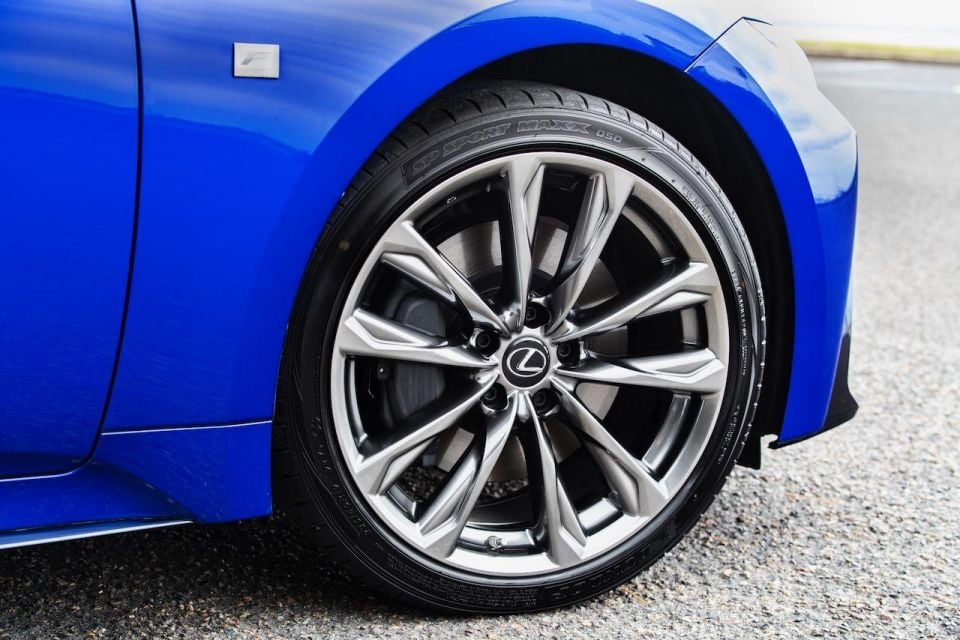
Buy your new car without the stress. It's fast, simple and completely free.

Great service from Travis and team, second time I have used this business would not hesitate to recommend them to anyone
Craig C.
Purchased a Ford Ranger in Sunshine Coast, QLD
CarExpert helped Craig save thousands on his Ford Ranger, now let us save you on your next new car.
Find a dealIn short, everything and the kitchen sink, which has been a hallmark of the Lexus brand from day one.
However, there are a few new features in the standard car headlined by a new high-resolution 10.3-inch touchscreen with Apple CarPlay and Android Auto, 18-inch alloy wheels (replacing 17s), and an electric parking brake replacing the awkward footbrake.
Safety on board the latest IS gets a boost with the addition of new standard technology including autonomous emergency braking with day and night pedestrian detection and daytime cyclist detection, all-speed active cruise control, lane trace assist, road sign recognition, blind-spot monitoring, and rear cross-traffic assist.

These features join a long list of existing creature comforts comprising dusk-sensing bi-LED headlights with washers, rain-sensing wipers, keyless entry and start, electrically folding (heated and auto-dimming) door mirrors, approach lighting with puddle lights, power tilt and telescopic steering wheel, satellite navigation with live traffic, 10-speaker Pioneer audio, DAB+ radio and dual-zone climate control with touch-sensitive functionality.
You also get heated and electronically-adjustable front seats along with Lexus connected services which adds SOS emergency call, automatic collision notification, and stolen vehicle tracking. There are also 10 airbags and a tyre pressure monitoring system.
Beyond that Luxury models can gain a $2000 Enhancement Pack that simply adds a moonroof, or the $5000 Enhancement Pack 2 which also includes the moonroof but adds a 19-inch alloy wheel package with lower profile 235/40 section tyres, multi-element LED headlamps, Sumimoku ornamentation (more luxurious trim), leather-accented upholstery, a 17-speaker (1800-watt) Mark Levinson audio system, cooled front seats, and electric rear sunshade.
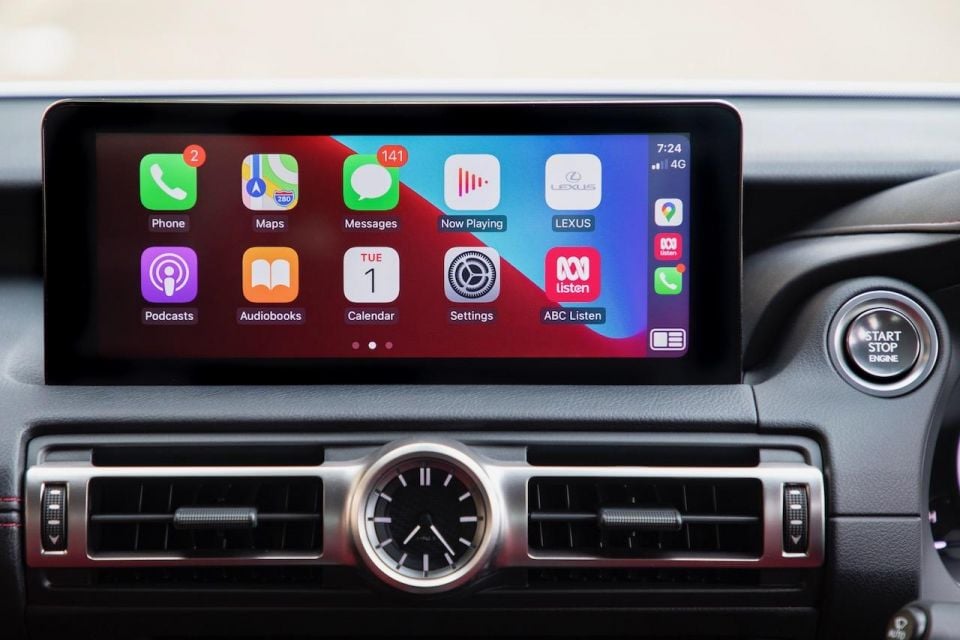
Choose the F Sport versions and you get trick-looking 19-inch alloys with a smoked finish for the first time, unique F Sport exterior styling, exterior mirrors with auto-fold function and memory, as well as adaptive sports suspension.
Other F Sport kit includes driver’s seat memory with easy access, ventilated front seats, F Sport-specific customisable drive modes with additional Sport+ mode, LFA-style digital instrument display, model-specific front seats, steering wheel, ornamentation, scuff plates and pedals rounds – it’s an extensive kit list.
It might be a tad confusing but all three F Sport models can be had with the Enhancement Pack, adding a moonroof, 17-speaker Mark Levinson audio system, electric rear sunshade and $3000 to the price.

The current-generation Lexus IS was awarded a five-star ANCAP safety rating for all cars from October 2016. Beyond that, the model received AEB for Vulnerable road users from October 2017.
Its overall score was 35 from a possible 37, with scores of 14/16 for frontal offset, 16/16 for side impact and 2/2 for the pole test. It rated a ‘good’ for whiplash protection and pedestrian protection.
For 2021, the IS adds a host of new safety systems as previously outlined in this review, but highlights overall include 10 airbags, AEB with day and night pedestrian detection and daytime cyclist detection, all-speed adaptive cruise control, lane trace assist, road sign recognition, blind-spot monitoring and rear cross-traffic alert with brake and emergency steering assist.
Additionally, the IS is equipped with reversing camera with rear guide assist, as well as front and rear parking sensors.
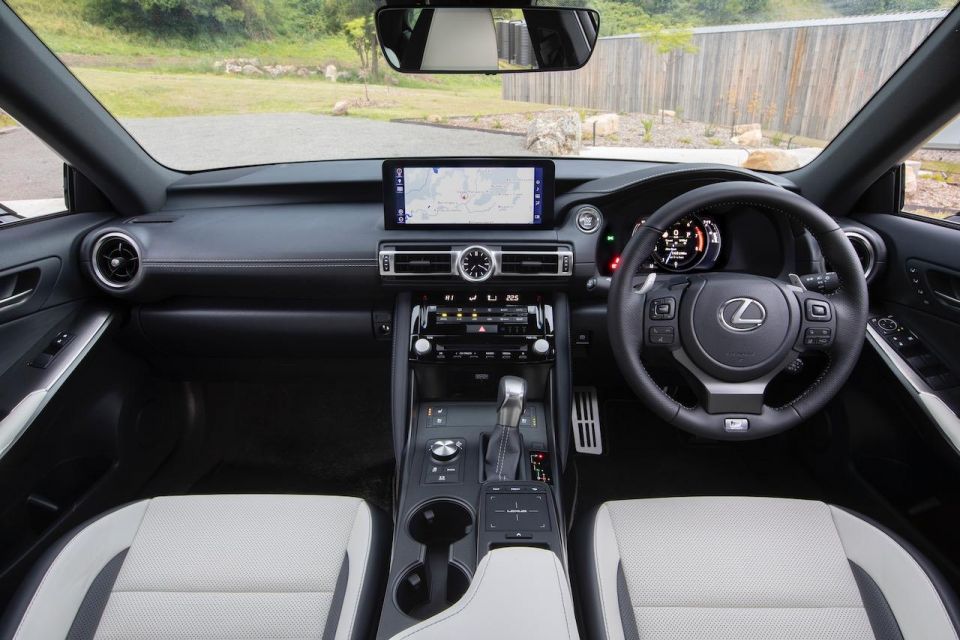
It doesn’t seem to matter what grade of leather or even what colour hide you choose, whether it’s crème with contrasting grey inserts, a rich tan or even cordovan – all of it looks and feels better than anything in a Nick Scali store.
The F Sport seats are some of the most comfortable in the business, thanks to the specific contours and levels of bolster on both seat and seatback which make this cockpit feel so special. There’s genuine craftsmanship at work here and I’d argue it’s better than what the German marques do in the same segment.
Inside, the F Sport models we sampled had that same leatherwork wrapping the car’s wonderfully tactile steering wheel, door cards, centre console and dashboard. You won’t find many hard plastics inside the cabin but even those look and feel far better than the norm.
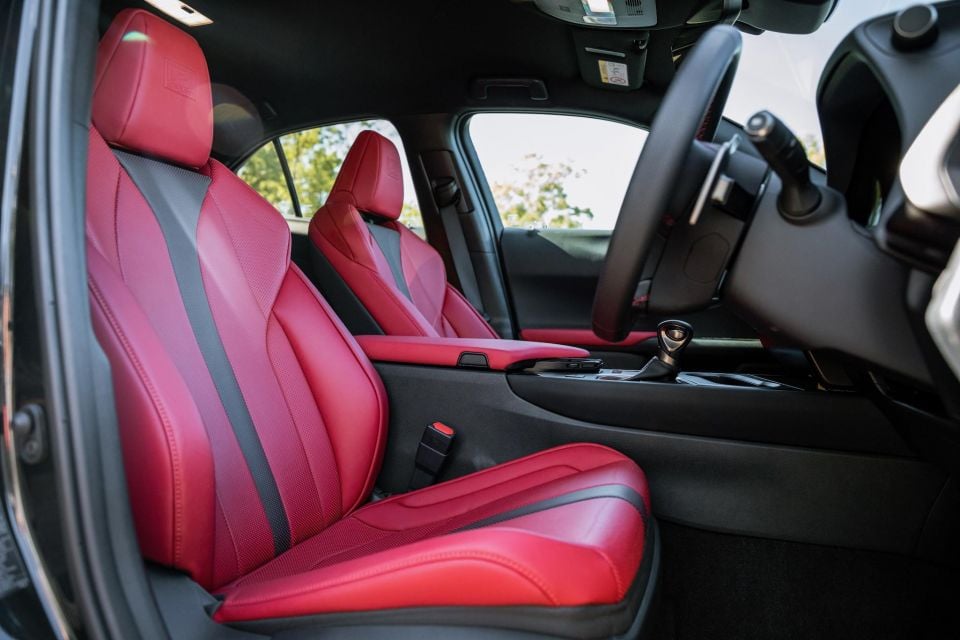

The brushed metal accents surrounding the various air vents are real metal and where they meet the leather dash is perfectly seamless, as is the stitching. It’s all so perfect. If I had to compare, I’d say it feels closer to Bentley than any of its direct competitors. Big call I know.
We’ve been waiting years (decades even) for Lexus to get its act together in the infotainment department and ditch that horrid track-pad operation, and although it’s still there, the new 10.3-inch widescreen sitting front and centre with Apple CarPlay and Android Auto is a most welcome addition to the IS range.
Only F Sport models get the tricky LFA-style digital instrument display whereas the Luxury versions get the same traditional binnacles carried over from the pre-updated car, but even those are visually impeccable.
The metal switchgear (dials, buttons and instrument stalks) are all beautifully damped, so there’s never any harsh clicking sound. It’s the same with the auto up-down windows – they open and shut with a whisper instead of a clunk.
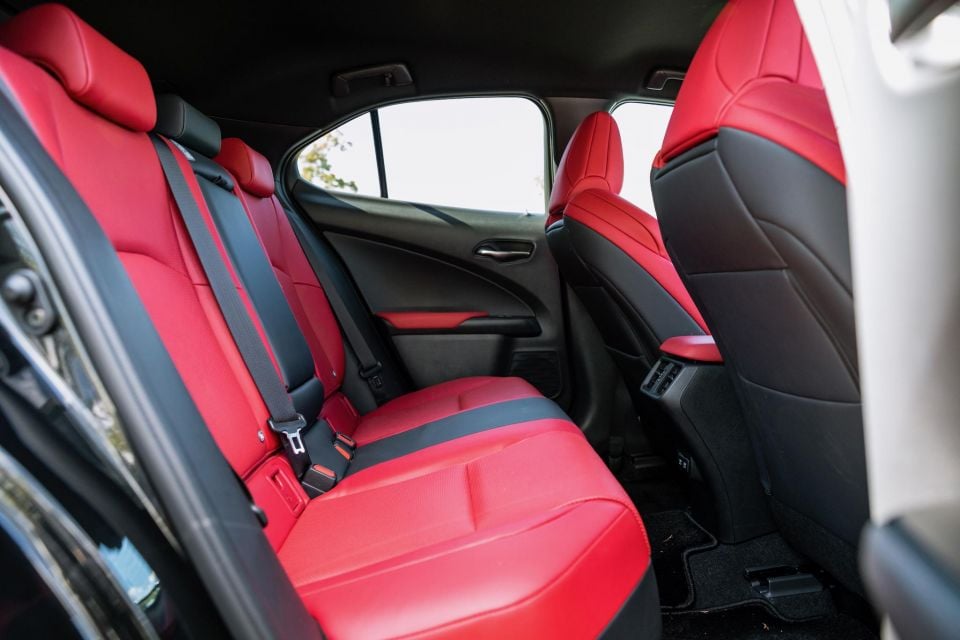
And, while we can’t fault the build quality or even the general ambience, the layout of the dash looks and feels dated – like a private member’s club in Pall Mall, devoid of the kind of the cutting-edge tech of its key competitors, save for the single touchscreen.
Even though the new Lexus IS longer than the previous model, it’s still slightly shorter than the Audi A4 and BMW 3 Series. Only the Mercedes-Benz C-Class is shorter and not by much. That said, with the driver’s seat set to my ideal driving position, there’s decent rear legroom and space to get your shoe-tips under the front pews for extra knee stretch.
Boot space is reasonable, too, with 480 litres available across IS300 and IS350 models, while the IS300h (hybrid) loses 30 litres for a total of 450 litres. That’s identical to the 3 Series and more than both the A4 and C-Class.
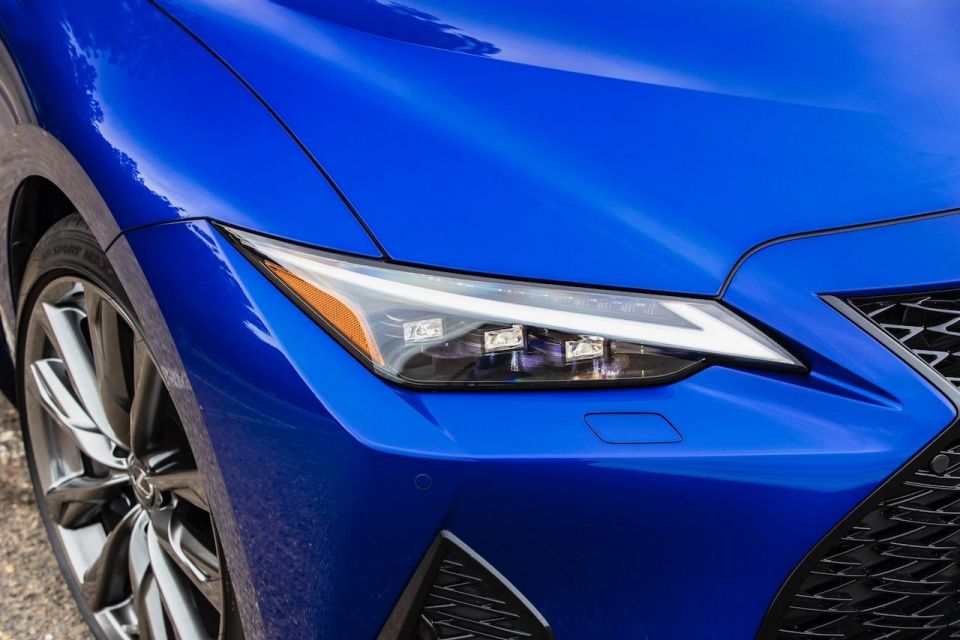
Where expert car reviews meet expert car buying – CarExpert gives you trusted advice, personalised service and real savings on your next new car.
It’s worth noting the three powertrains used in the new IS have been around for a while and outputs remain the same as the previous iteration.
In the IS300 models you’ll find a 2.0-litre four-cylinder turbocharged petrol engine good for 180kW of power at 5800rpm and 350Nm of torque from 1650 to 4400rpm sent to the rear wheels via a traditional eight-speed automatic gearbox.
IS300h models are powered by a hybrid power unit which pairs a 2.5-litre naturally-aspirated petrol engine with a 650V electric motor for a combined power output of 164kW sent to the rear axle through an electronically controlled e-CVT transmission with sequential shifting.
The range-topping IS350 uses the same naturally-aspirated (non-turbo) 3.5-litre V6 petrol motor producing 232kW at 6000rpm and 380Nm of torque at 4800-4900rpm to the rear wheels through an eight-speed auto.
Fuel consumption for the IS300 and IS300h is listed as 8.2L/100km and 5.1L/100km respectively, while the high-performance IS350 is thirstier using an average of 9.5L/100km on the combined cycle, but with improved Euro 6 emissions compliance
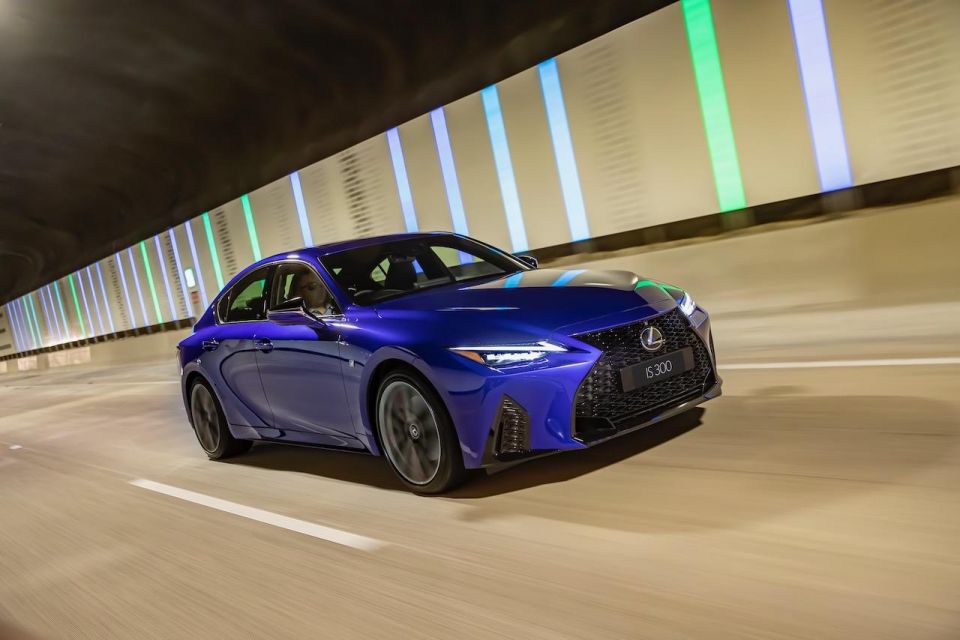
While some might conclude all three IS powertrains are somewhat lacklustre in their performance, and I’d be one of those, you can’t argue with the fact that they’re also some of the more refined in the class.
Although we got to sample all three engine variants during our Australian launch drive, it was the IS300h in which we got the most seat time as well as the more spirited driving sessions. Pity, because I much prefer the IS350 for its ultra-smooth revving and more vocal character.
Either way, the low-set seat position in the Lexus IS allows for a superb driving position that encourages a more spirited driving style. At times the pace was furious and we had to summon everything the hybrid system could muster in the most aggressive drive mode.
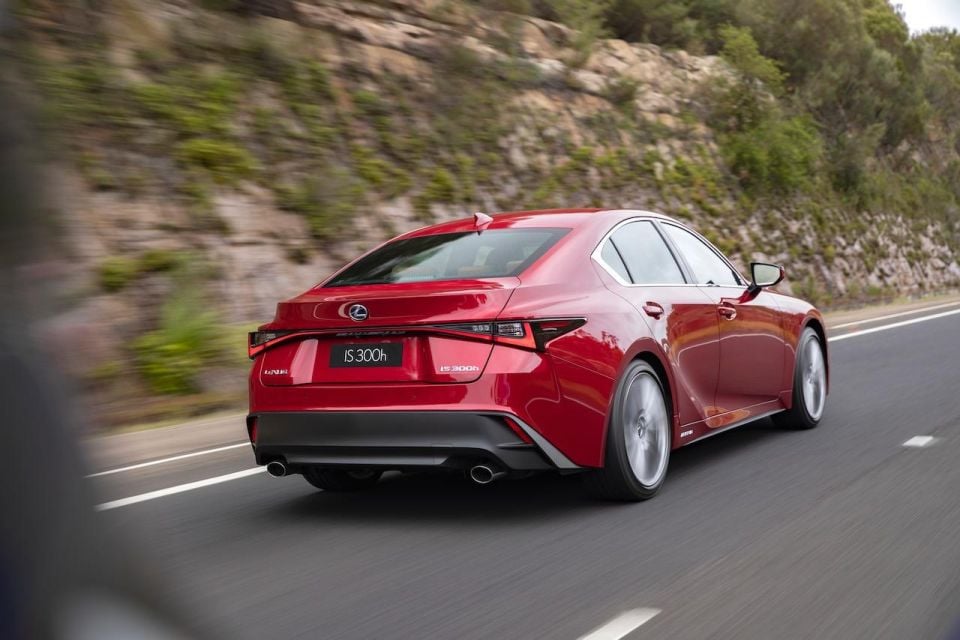
While the hybrid doesn’t have the mid- to high-range pull of the turbocharged 2.0-litre or V6 it still manages to hold its own, provided you work it hard. It can get a tad noisy up high but it’s still a smooth-revving powertrain, better suited to city life and the daily commute, I’d argue.
On the other hand, the turbocharged IS300 is a significantly more potent machine that benefits from a high torque output across a wide rev band. There’s some lag on initial acceleration from a standing start, but above 2000rpm there’s strong pulling power for safe high-speed overtaking. What’s more, shifting via the paddle-shifters is well suited to this drivetrain.
The IS350 is easily the most sonorous of the new IS range, especially when you’re at peak torque around 5000rpm. It’s still quick, but lacks excitement. This is a car that deserves more under the bonnet as its rivals have long moved on in favour of turbocharging across the board, even with hybrid systems.
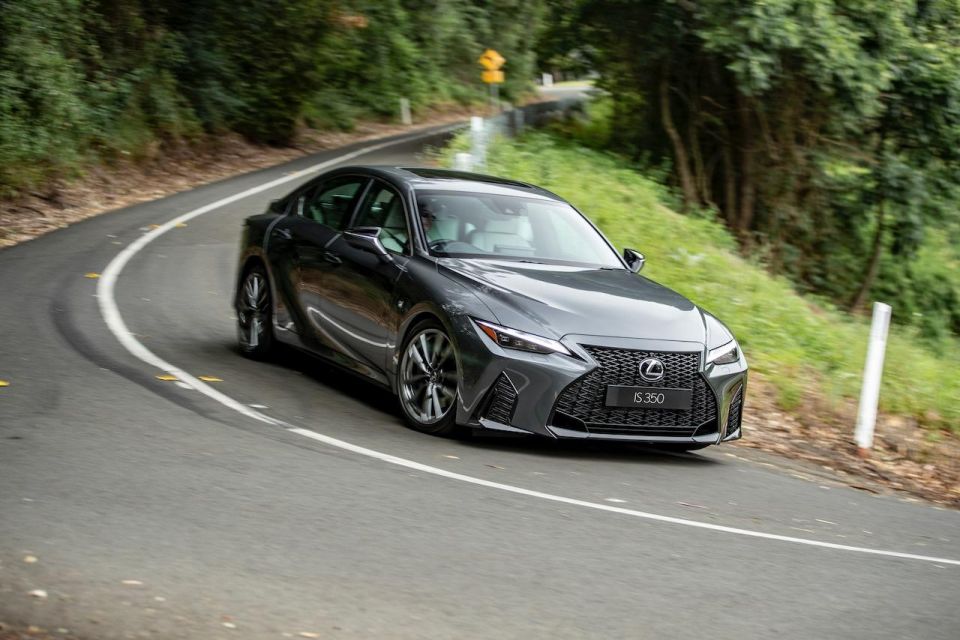
That said, rumours have been circulating for some time around a return of the hi-po IS F which might use the naturally-aspirated V8 from the now-discontinued GS F sports sedan and RC F coupe that delivers 354kW and 535Nm. Let’s hope the engineers are a little more ambitious and turn the wick up on that.
While Lexus engineers may not have had a mandate to tinker with the powertrains in the revamped IS, it’s a different story when it comes to its dynamic attributes. This is a more sorted car entirely in that regard.
Along with the wider tracks and lighter suspension, there’s greater rigidity thanks to extra bracing connecting the front pillar section and apron, as well additional spot welds. The result is a sports sedan that has terrific poise, balance and grip – even when you’re having a real crack.
Turn-in is sharp and very accurate – the car goes exactly where you point it, and the meaty steering encourages confidence behind the wheel. It feels wonderfully neutral through the bends, and it’s at this point you can easily forget its luxury vehicle status as you punch out of another corner.

As with all Lexus vehicles, the IS comes with a four-year/100,000km warranty with four years of roadside assist.
Service intervals are 15,000kms or 12 months – whichever comes first – and Lexus also offers a capped-price servicing plan for the first three years at $495 per service.
IS owners also receive free membership to the Lexus Encore program which includes a free loan car while your car is serviced, which can be either collected at the dealership or dropped off to your home or office. Once serviced, your car will receive a complimentary wash and vacuum before collection or drop-off.
Encore members also receive a five-cents-per-litre discount from participating Caltex and Ampol service stations, among a host of other benefits.

There’s no doubt the latest iteration of the Lexus IS is a more resolved car than its predecessor for a number of reasons, highlighted by its newfound design, new technology and safety systems along with sharper dynamics.
It’s still a beautifully built and engineered sports sedan with solid levels of practicality to boot, but it also feels outdated inside and its powertrains are outclassed by all its key rivals.
Still, its reputation for unrivalled luxury and build quality in the segment is still massively appealing and should count for plenty in this disposable world we live in today.

Click the images for the full gallery
MORE: Lexus IS news and reviews MORE: Lexus news and reviews
Where expert car reviews meet expert car buying – CarExpert gives you trusted advice, personalised service and real savings on your next new car.
Anthony Crawford is a CarExpert co-founder and senior presenter with 20+years in automotive journalism and content creation.


Damion Smy
10 Hours Ago


Damion Smy
11 Hours Ago


Damion Smy
13 Hours Ago


Damion Smy
14 Hours Ago


Damion Smy
16 Hours Ago


Damion Smy
17 Hours Ago